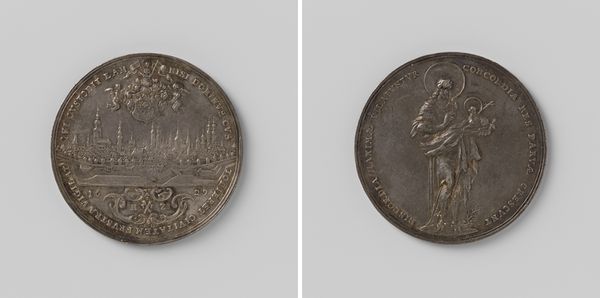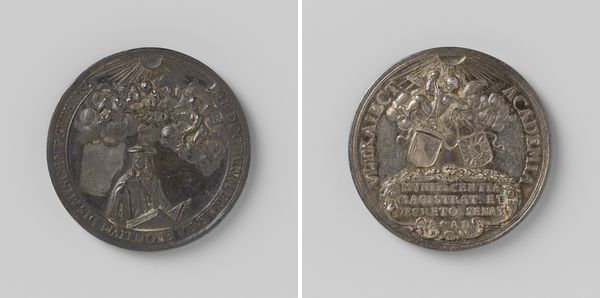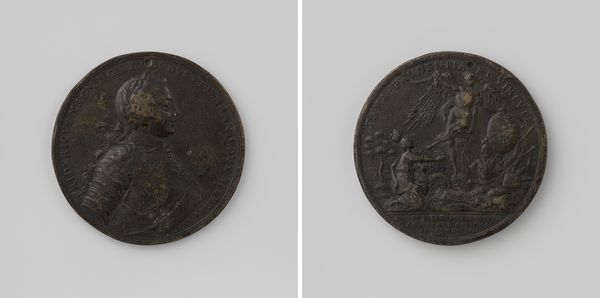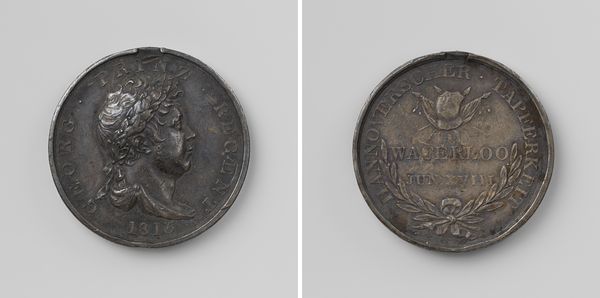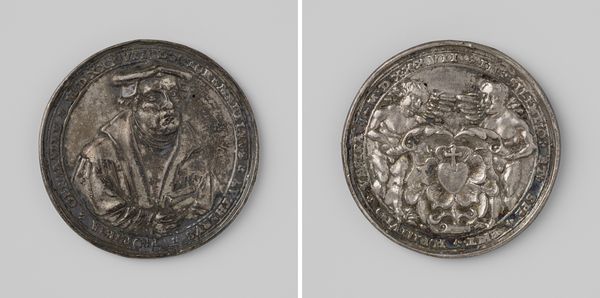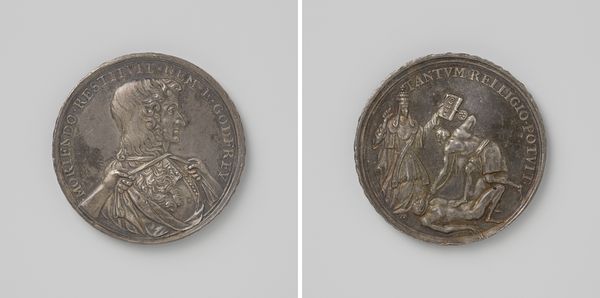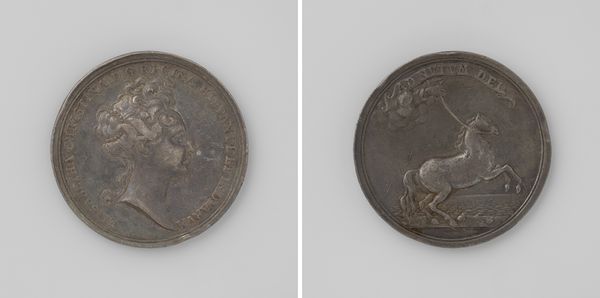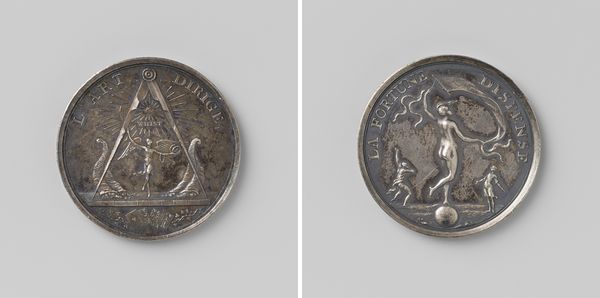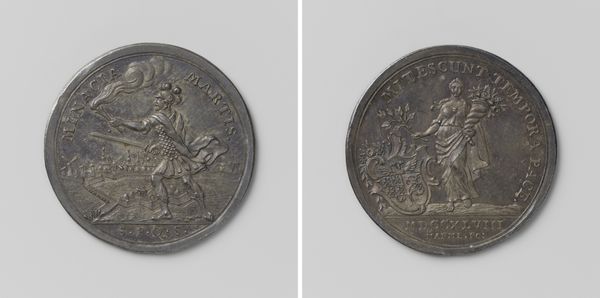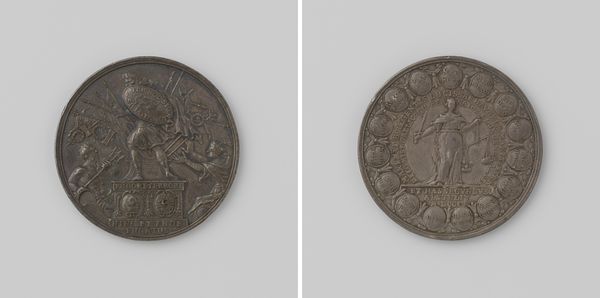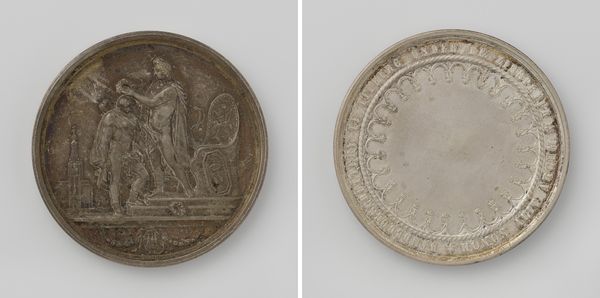
metal, relief, bronze, sculpture
#
portrait
#
neoclacissism
#
allegory
#
metal
#
stone
#
sculpture
#
relief
#
bronze
#
sculpture
#
history-painting
#
statue
Dimensions: diameter 4.9 cm, weight 33.49 gr
Copyright: Rijks Museum: Open Domain
Editor: This bronze relief is entitled "Birth of the King of Rome, Son of Napoleon," created in 1811 by Franz Stuckhart. It seems like a commemorative medallion. What catches my attention is the way the material almost mutes the grandiosity of the imagery, muting Napoleon's perceived importance. What’s your take on this? Curator: Well, consider the material itself – bronze. Its value isn't solely aesthetic. Think of the mines, the smelting, the labor involved in its production. These medallions weren’t mass produced with today’s technology, so that each would represent a certain commitment in production costs, and thus distribution was limited. Who was the intended audience, and how would their social status shape the reception of Napoleon's image? Editor: I see what you mean. It's not just a picture of Napoleon; it's a statement about power and access. Do you think the choice of bronze has any particular connection to Neoclassicism, the art movement associated with this artwork? Curator: Absolutely! Neoclassicism embraced ideals of republicanism, drawing on imagery from ancient Greece and Rome. But bronze evokes earlier practices of cultural recording. Does the use of this older technique somehow add more credibility to the record of Napoleon's newborn son? Or, how does it play into the broader social and economic climate in Europe at the time, during the Napoleonic Wars? Editor: That makes me see this relief in a whole new light! I initially saw it as a straightforward historical image, but thinking about the bronze itself – the process and distribution and cost of it - really contextualizes it as a social object too. Curator: Exactly. Examining the materials helps us question what this piece was meant to communicate and to whom. It reveals its intended historical impact. Editor: Thanks! Looking beyond the surface to consider the bronze and the means of production definitely shifts my understanding. I'll remember that approach. Curator: Indeed, there's often a deeper, more complex narrative embedded within the materials.
Comments
No comments
Be the first to comment and join the conversation on the ultimate creative platform.
